6 Tips for Modifying Your Power Yoga Practice During Pregnancy
I am almost three years out from practicing and teaching power yoga while pregnant but I still receive questions all the time about modifying power yoga for pregnancy while still maintaining a strong/regular practice. I recently relocated these prenatal yoga photos that Scott Broome shot for me a few weeks before my due date and just received the same question from a fellow expecting teacher and was inspired to write a post on the topic!
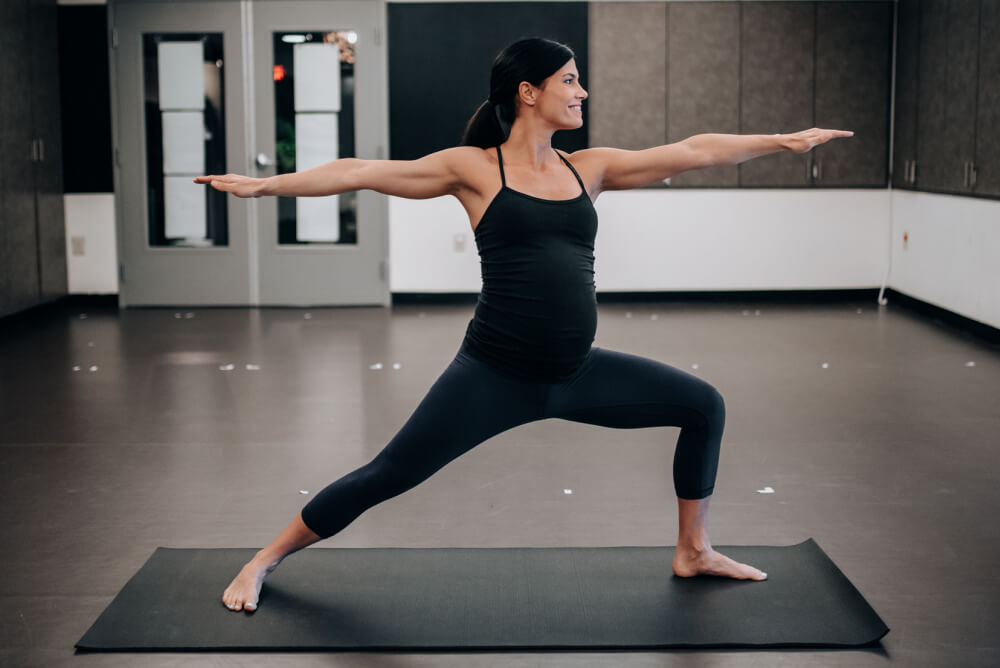
The most important thing to remember is that every single body is different and what feels good for one pregnant woman might not be the right thing for another. Personally, I was able to practice throughout my entire pregnancy and felt really great in my body but I have friends and students who either greatly scaled their practice or stopped practicing all together during pregnancy because it wasn’t working for them. I truly believe there’s not a black and white, right or wrong for practicing yoga during pregnancy and so much of it is unique to the yogi’s body and the baby they are carrying.
And now….here are my top tips for modifying your power practice for pregnancy with the assumption that you are listening to your body, practicing within the scope of what’s reasonable for your body and that your midwife or doctor is on board. Most of these tips are most applicable to the second half of pregnancy when your belly starts to really grow but can be implemented throughout all of pregnancy.
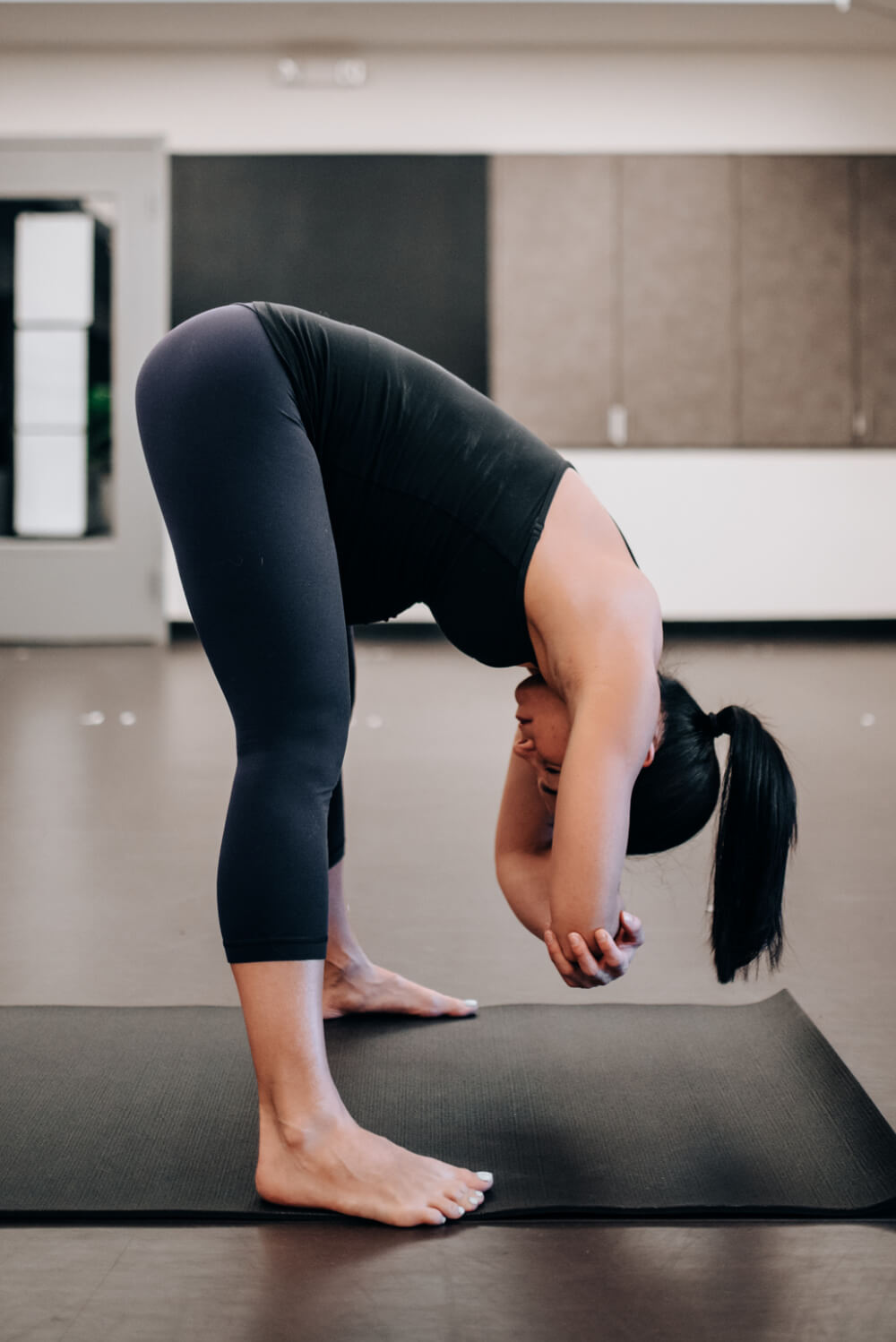
1. Widen legs and soften knees in forward folds.
Widening your base in forward folds where your feet would typically be hips distance apart (like rag doll, bound forward fold, padangusthasana and padahastasana) can be extremely helpful in creating space for your belly to fold forward without running into the the tops of your thighs. Take your feet about mats distance apart or even wider.
Softening your knees in forward folds is important for protecting your hamstrings from over-stretching, especially up near the attachment. Remember, when you are pregnant your body produces a hormone called relaxin. It’s meant to relax the ligaments in the pelvis and soften the cervix to prepare for birth but it tends to have an overall effect of causing joints to become more elastic and lose some stability. It’s important not to push the stretching part of your practice during pregnancy because of this hormone.
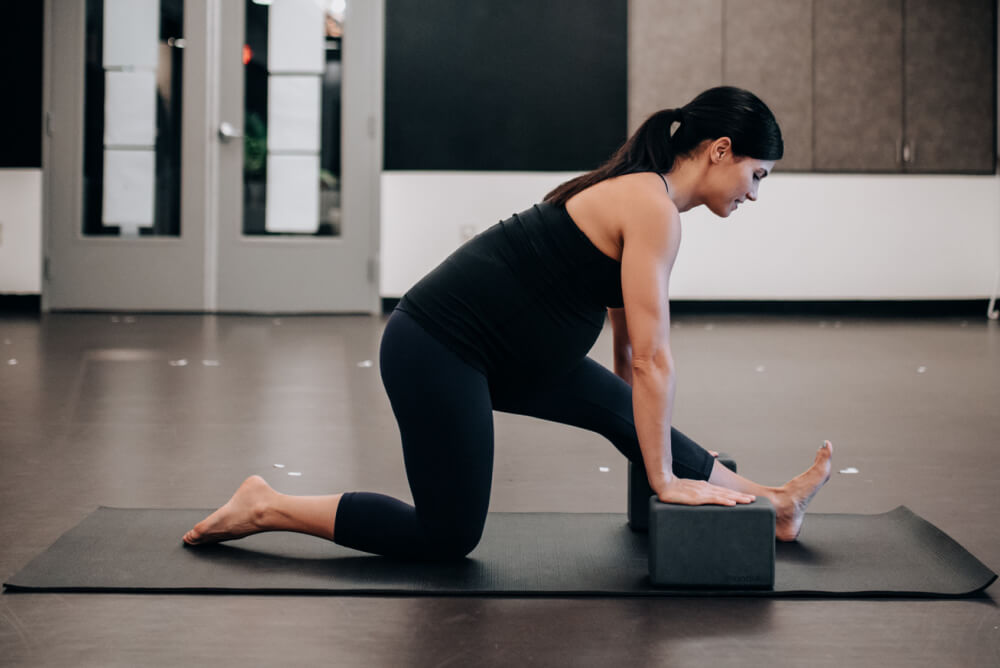
2. Bring blocks to the mat every time you practice.
I rarely practice without a block even when I’m not pregnant but I never came to my mat without blocks when I was pregnant. Blocks are helpful for so many pregnancy modifications. Take the photo above for example, using a block under each hand in half splits allowed me to lessen the stretch on my hamstring and also create space for my belly so it wasn’t pressing into my thigh. It also allowed me to keep a long spine and avoid rounding of my back and shoulders.
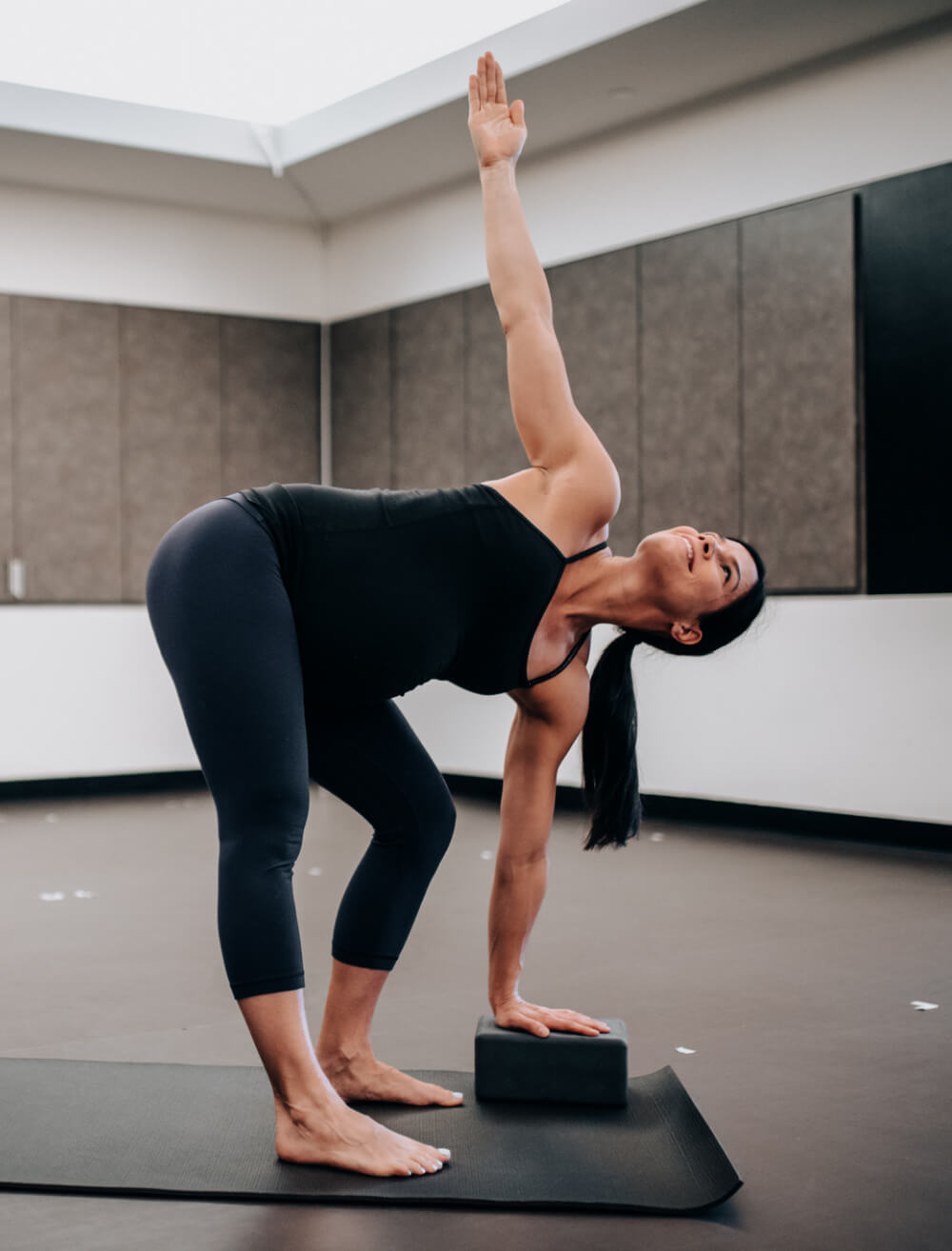
And in this photo the block is bringing the floor closer so that I can give my belly a lot of space to find this thoracic twist while maintaining axial extension of my spine from sacrum to crown.
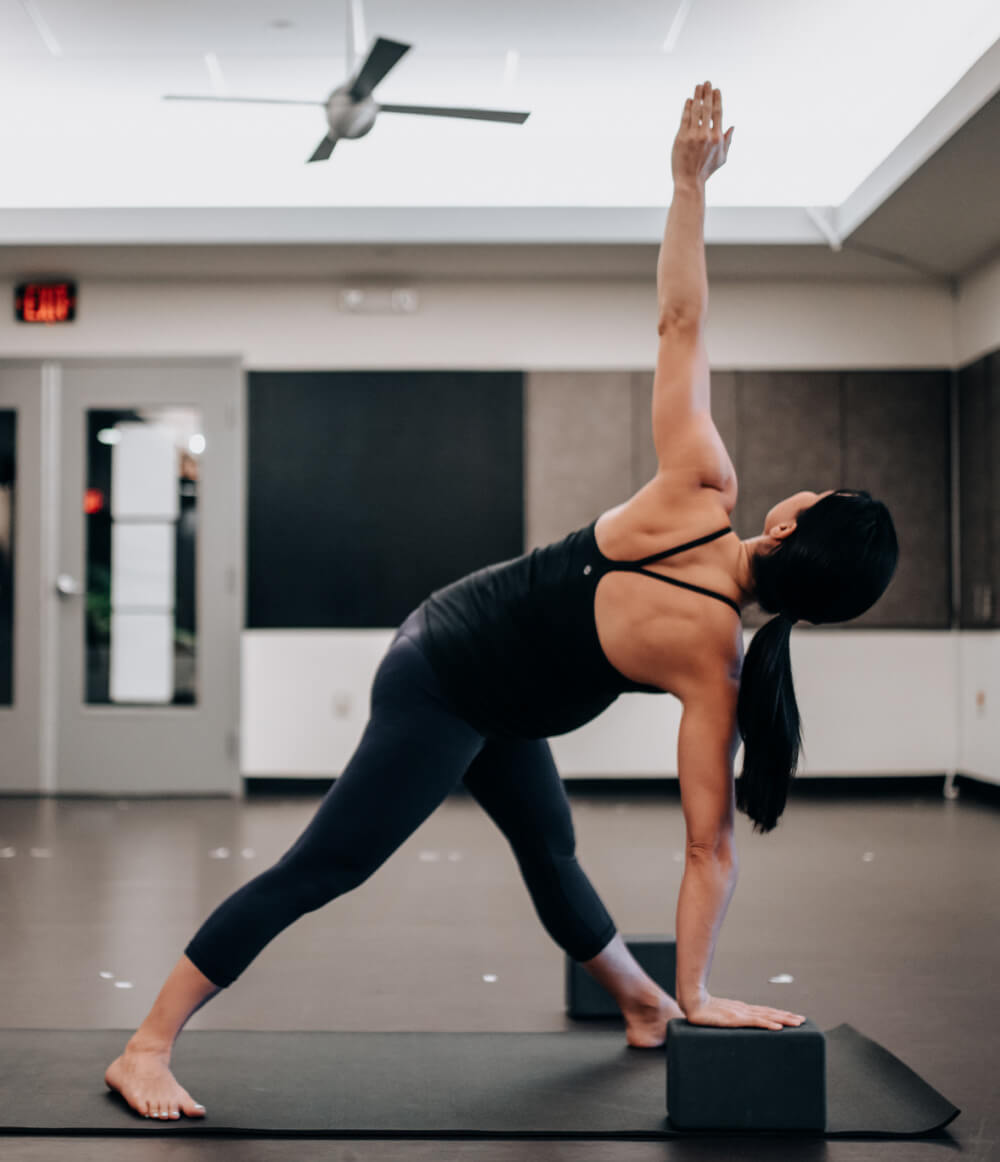
3. Keep twisting, just open them up!
There is a misconception that pregnant yogis cannot twist. This is bad information. You can absolutely twist and its so healthy and good for your spine during pregnancy to get some movement, especially as the belly (and breasts!) grow and pull everything forward. Back pain is a common complaint among pregnant women and gentle twisting is great for maintaining mobility in the spine and alleviating some of that pain. The key is to never compress the belly when twisting. I’m going to show you some examples!
In the photo above I am practicing revolved triangle. Non-pregnant, I would have my hand much closer to my front foot or even crossed to the opposite side of it. Pregnant, I put my hand on a block and out wide enough that my belly isn’t pressing into my front thigh. I’m still getting a nice thoracic twist here but in a way that is free and open.
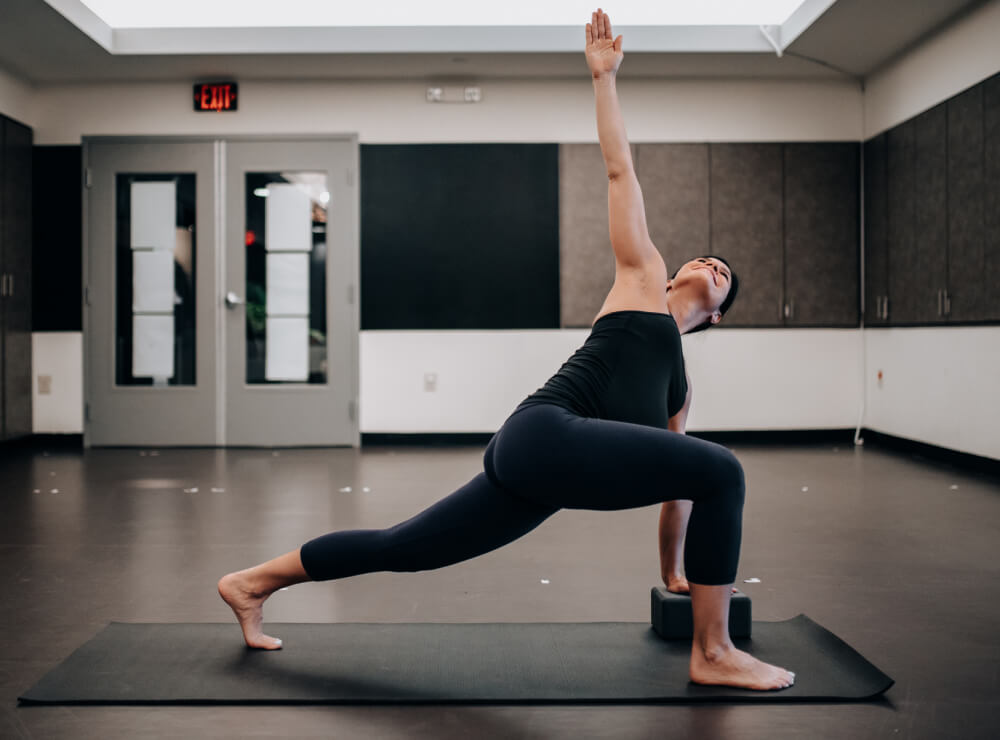
This is revolved side angle. You can see that once again I have my hand on a block and out wider to create space for my belly. I also used this pose as a modification for crescent lunge prayer twist throughout my pregnancy.
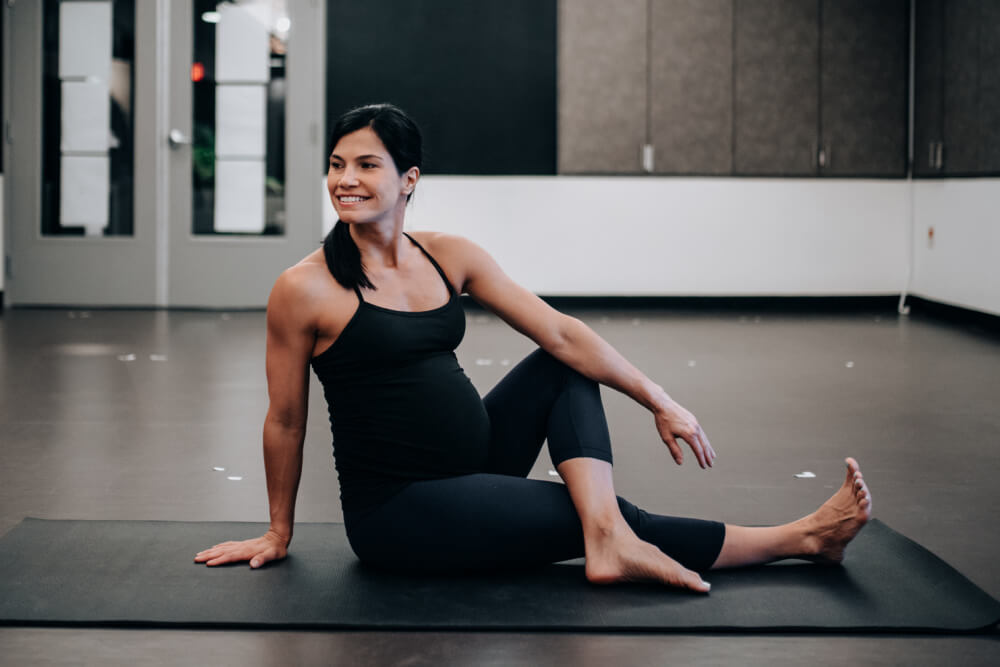
Finally, this is a seated twist. Instead of twisting the traditional way towards my knee, I keep the twist open and twist away from my knee to keep the belly free.
4. Scale back on backbends but you can keep doing them.
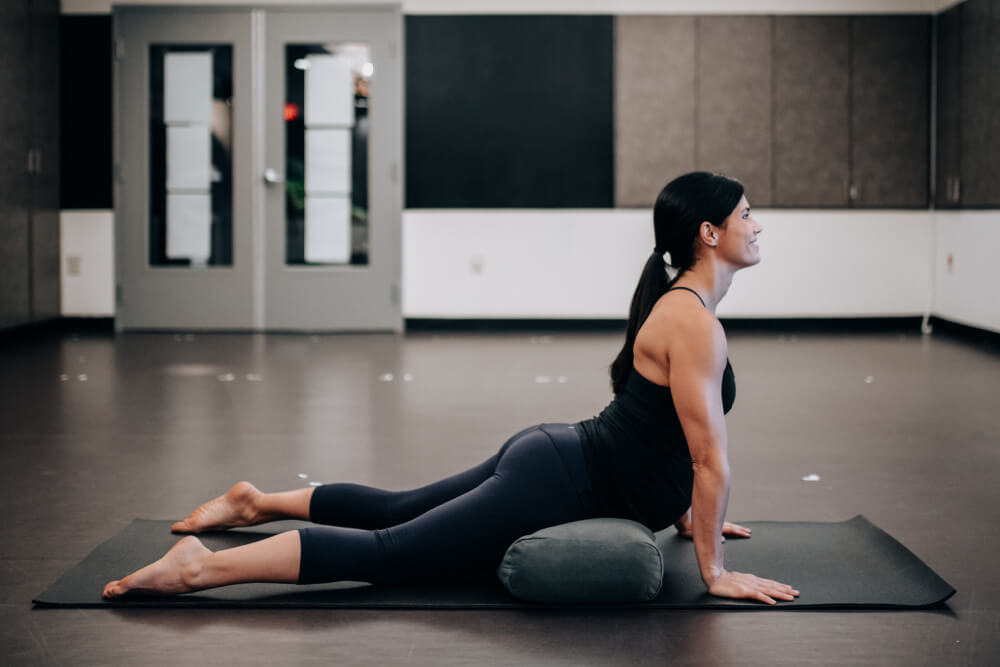
Typically, there are a lot of chaturangas in power yoga and that means a lot of upward facing dogs. I was able to up dog through my pregnancy although I found it helpful to ground my thighs and bring them wider than hips distance apart. Typically they were about mats distance apart like you see in the photo above. I can also be helpful to place a bolster under the tops of the thighs/hips for up dog but that can be difficult to do when you’re moving through a faster flow. It’s a great option for a static hold in up dog though to stretch the front body.
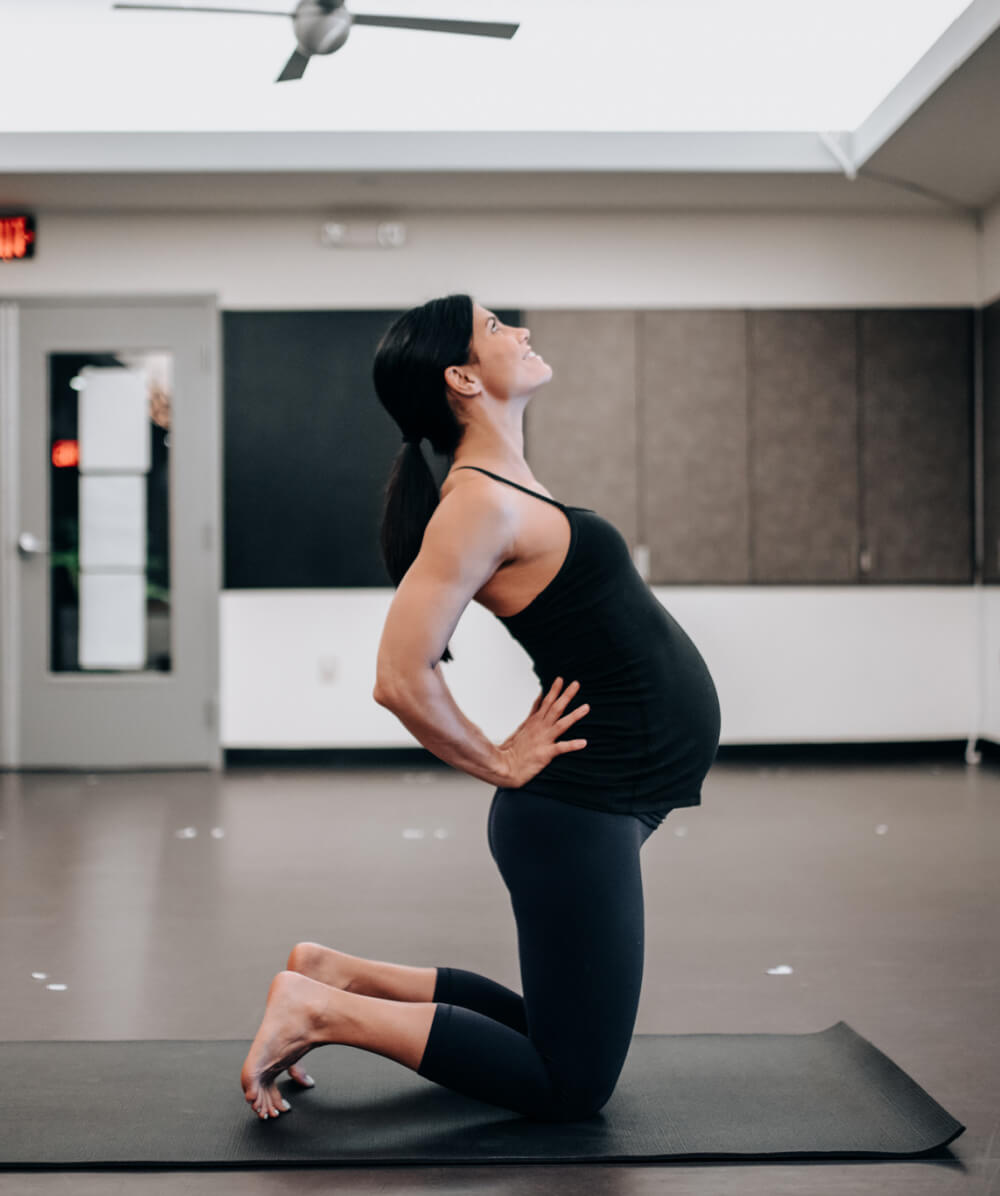
Camel variations can be great for pregnancy. If reaching back to the heels doesn’t feel like the right thing then hands to the low back can be a great way to still experience a nice backbend without overstretching the belly or compressing the low back.
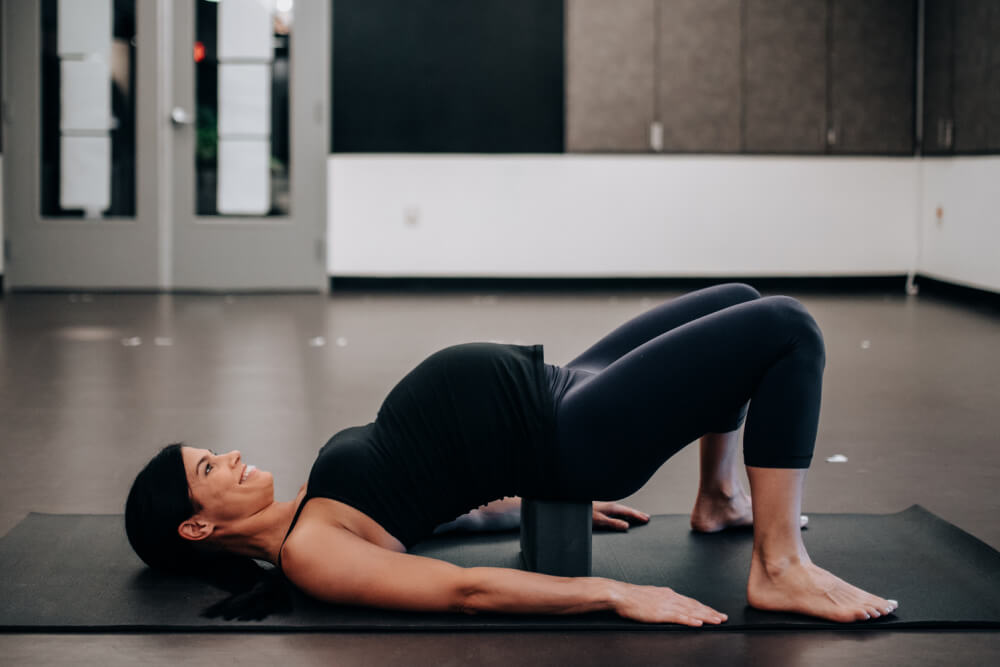
My favorite backbend for pregnancy is bridge pose and supported bridge on a block. This is one you can keep practicing right until the very end. Bridge without the block is beneficial for keeping glutes strong and engaged. Bridge on a block is a nice restorative post to alleviate tension/pressure in the low back and gently open the front body.
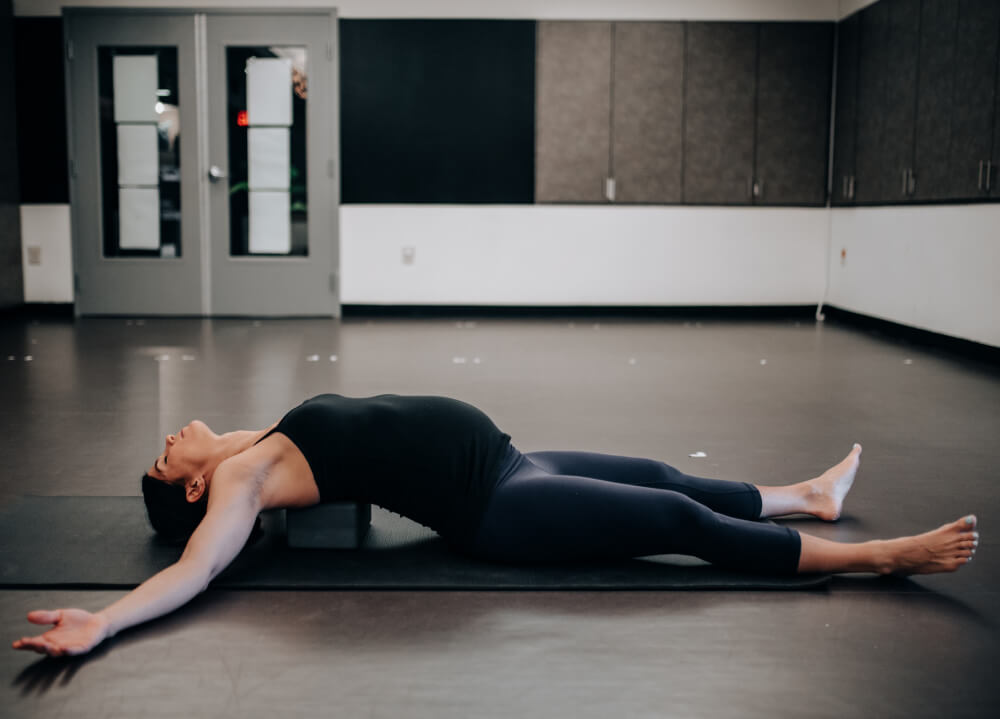
Supported fish is also super wonderful for getting all the benefits of a backbend in your chest, shoulders, throat and upper back without a big stretch of the belly or any compression of the low back.
What you want to avoid when it comes to backends in pregnancy is belly backbends like locust, sphynx and bow once you have a belly (these are typically okay in the first trimester) and super deep backbends like wheel because you don’t want to exacerbate any abdominal separation that might lead to diastasis recti.
5. Keep working your core.
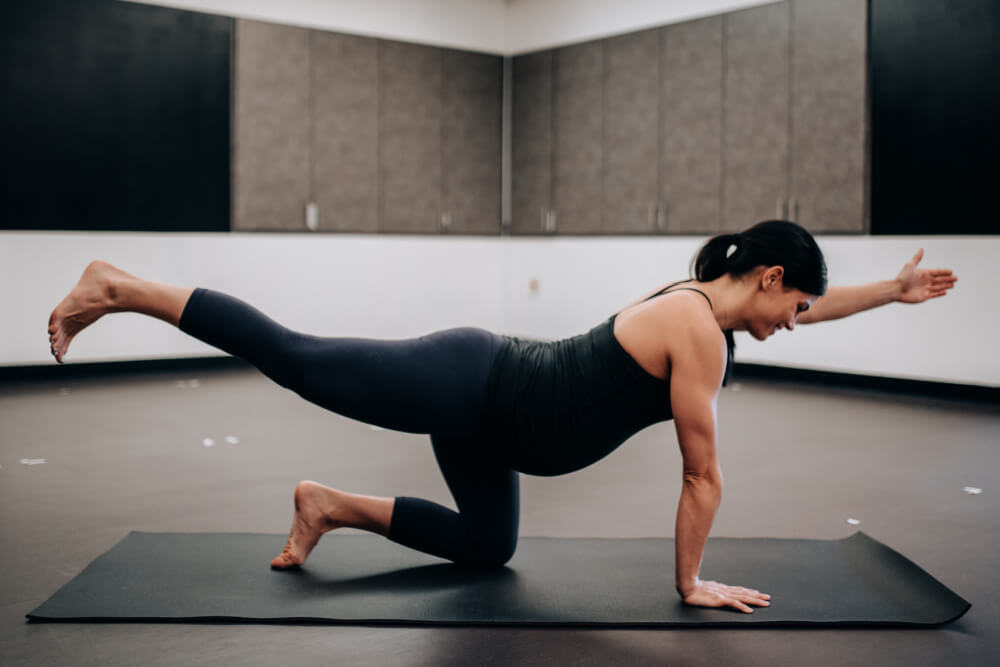
So many of my pregnant students wonder what to do when the rest of the class is planking, bicycling or crunching (these are things you definitely want to avoid, especially after the first trimester). My favorite recommendations are spinal balance variations, hip bridge lift and lowers, squats and diaphragmatic breathing. Oftentimes, I would just sit on a block and focus on my breathing or do some pelvic floor engagement.
Remember, your core is so much more than just your abs! It’s important to keep your low back muscles, glutes and hip flexors strong too.
6. How to take rest.
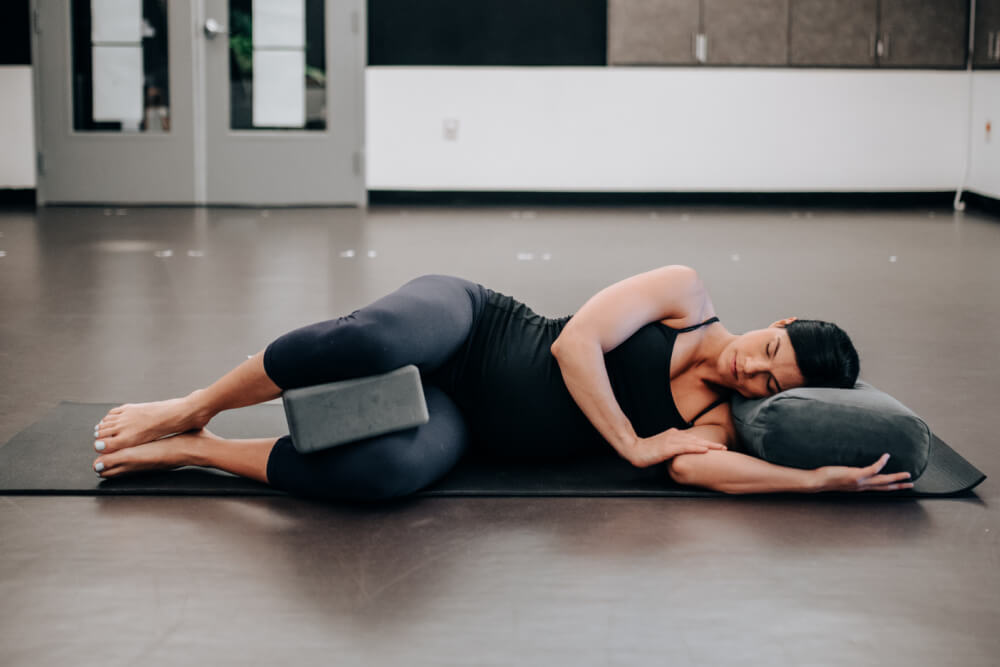
Generally, it’s recommended that once you start showing that you take savasana lying on your left side instead of on your back. That being said, I was comfortable on my back up until the third trimester so don’t stress if that feels good for you! A few minutes on your back is not something to worry about. When you do take savasana on your left side, you may be more comfortable placing a block beneath your knees to square your hips and your head on a bolster. If you’re not comfortable lying down for savasana (hello heartburn), you can also take a comfortable seated position. I like to sit with hips elevated on a block.
[……]
